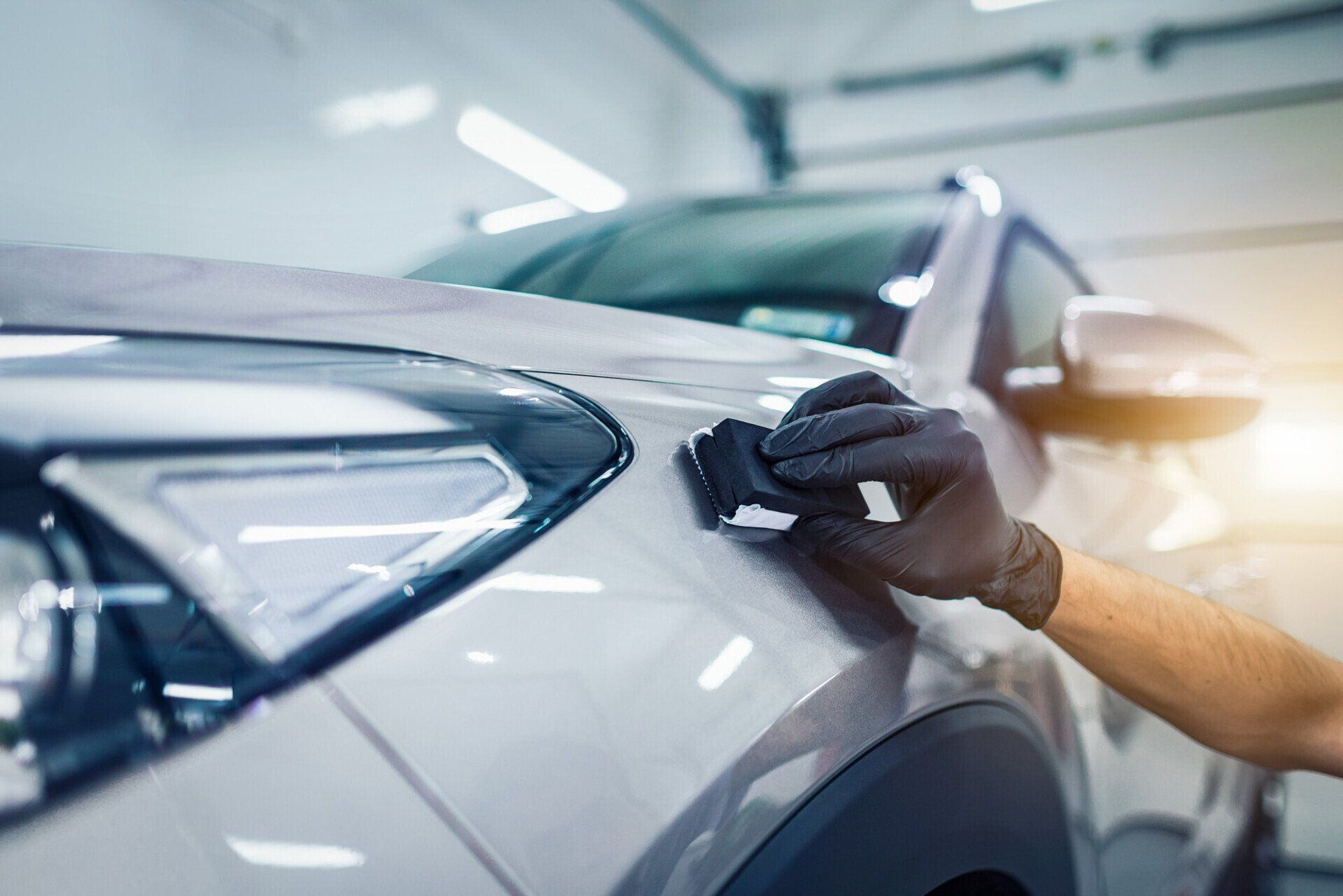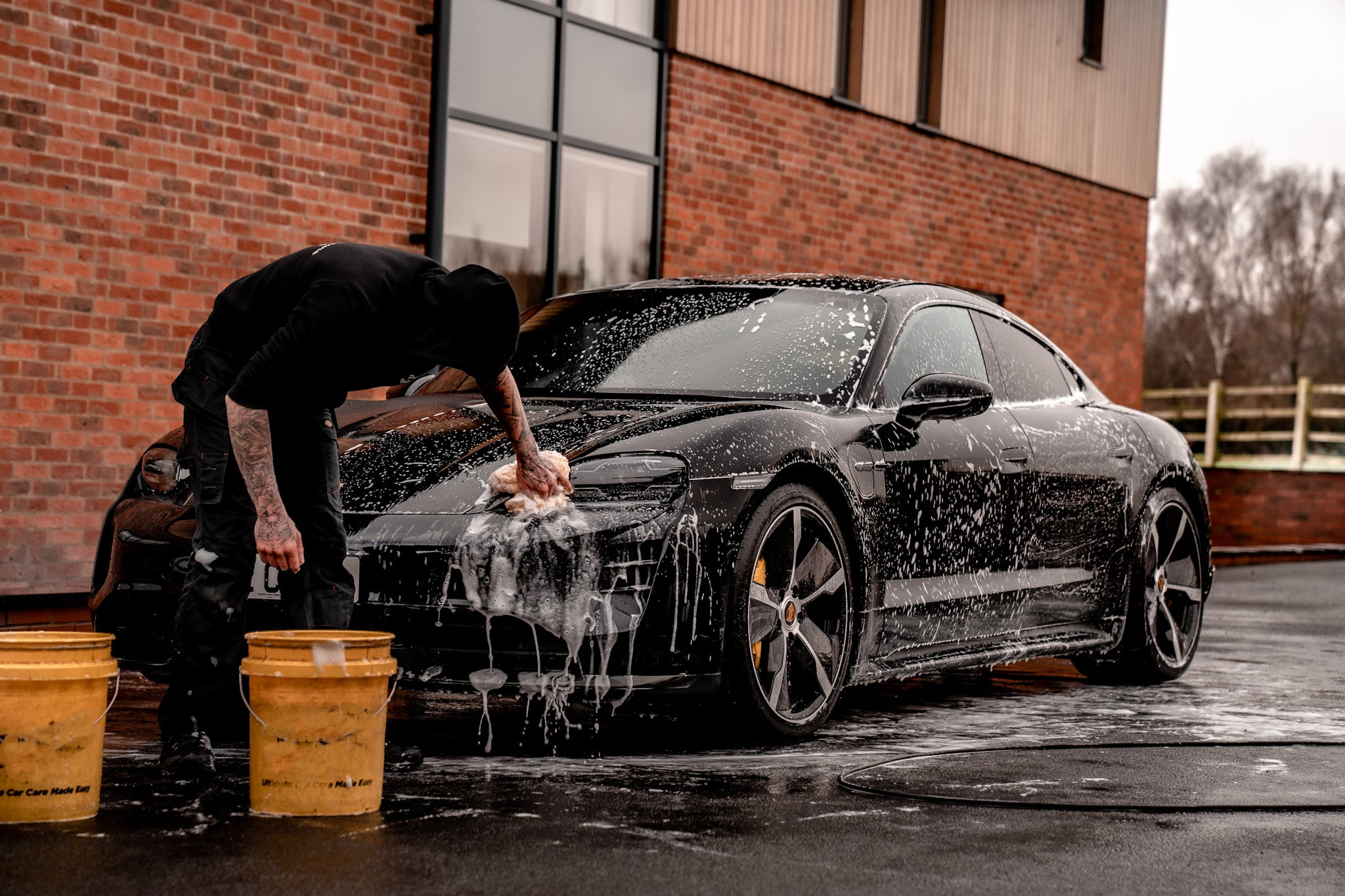Top Ceramic Coatings San Jose to Shield Your Cars and truck's Paint
Top Ceramic Coatings San Jose to Shield Your Cars and truck's Paint
Blog Article
Unveiling the Scientific Research Behind Ceramic Coatings: How Does It Job and Why Is It Above Traditional Alternatives?
Ceramic finishes have actually been gaining appeal in numerous industries for their exceptional performance and sturdiness. Comprehending just how ceramic coverings work and why they outshine traditional choices is vital for those looking for to improve the durability and durability of their products.
The Chemistry of Ceramic Coatings
In recognizing ceramic finishings, diving into the detailed chemistry behind their make-up is necessary for grasping their capability and longevity. Ceramic finishings are largely made up of silicon dioxide (SiO2), which forms a strong and protective layer when put on different surfaces. This chemical structure offers outstanding resistance to warmth, chemicals, and deterioration, making ceramic layers very searched for for a large range of applications.
The chemistry behind ceramic coatings entails the formation of covalent bonds in between silicon and oxygen atoms, producing an inflexible network that improves the layer's strength and resilience. Furthermore, the presence of various other elements such as titanium, light weight aluminum, and zirconium additional improves the finishing's homes, offering increased solidity and attachment to surface areas.
Understanding the chemical make-up of ceramic finishings enables the personalization of solutions to suit particular demands, whether it be for automobile, commercial, or property objectives. By utilizing the power of chemistry, ceramic finishes remain to lead the way for remarkable security and efficiency in different markets.
Benefits of Ceramic Coatings

An additional considerable benefit of ceramic finishings is their hydrophobic nature. This residential or commercial property creates water to bead up and roll off the covered surface area, lugging dirt and pollutants with it. As an outcome, ceramic finishes make cleansing and maintaining surfaces a lot easier and much less taxing. Ceramic finishes provide improved tint and gloss depth, offering surfaces a vivid and shiny appearance. Overall, the wide variety of advantages provided by ceramic finishes make them a premium choice contrasted to typical finish methods.
Just How Ceramic Coatings Bond
Ceramic coverings bond to surfaces through a process that includes molecular attachment and chemical communications. When a ceramic finishing is applied to a surface, it develops a solid bond by chemically adhering browse around this site to the surface area at a molecular degree.
Additionally, the chemical interactions between the ceramic layer and the surface further improve the bond. ceramic coatings san jose. These interactions enable the ceramic finish to develop a smooth and continual layer externally, giving outstanding protection and toughness. Unlike typical coverings that might remain on the surface area without fully bonding, ceramic finishes develop a long-term bond that is immune to chemicals, UV rays, and extreme ecological conditions

Essentially, the bonding mechanism of ceramic finishes guarantees a resilient and effective protective layer that exceeds traditional layer alternatives. This remarkable bond adds to the longevity, scratch resistance, and long life of ceramic finishings, making them a preferred choice for various applications.
Resilience of Ceramic Coatings
The outstanding longevity of ceramic finishings originates from their robust molecular adhesion and chemical interactions with surface areas, making certain a resilient protective layer that surpasses typical finish choices. As soon as applied, ceramic coatings form a solid bond with the substratum, producing a resistant obstacle against numerous ecological stressors such as UV radiation, chemicals, and abrasions. This bond is so protected that it can hold up against the roughness of day-to-day use without weakening or deteriorating swiftly.
Unlike standard layers that might weaken over time, ceramic coatings preserve their integrity for a prolonged duration, giving resilient security for the underlying surface area. On the whole, the outstanding durability of ceramic finishings makes them a remarkable option for protecting a vast range of surfaces in different applications.
Ceramic Coatings Vs. Conventional Choices
In contrast to standard covering methods, ceramic layers offer a distinct blend of resilience and protective capacities that set them apart in different surface security applications. Conventional choices such as wax or sealants supply a momentary layer of security that can wear away quickly, calling for constant reapplication. On these details the other hand, ceramic coverings create a solid bond with the surface area, developing a semi-permanent or long-term obstacle that is very resistant to abrasion, chemicals, UV rays, and extreme temperatures.
Moreover, ceramic coverings supply superior hydrophobic buildings contrasted to typical finishes. The hydrophobic nature of ceramic coverings causes water to bead up and roll off the surface area, bring dirt and impurities with it. This self-cleaning impact helps to keep the surface's sanitation and gloss for extended durations, minimizing the requirement for frequent maintenance.
Furthermore, ceramic finishes have a thicker layer compared to standard choices, supplying enhanced scrape resistance and protection versus small effects. This longevity makes sure resilient performance and helps preserve the visual allure of the treated surface for a prolonged duration.
Verdict
To conclude, the scientific research behind ceramic coatings hinges on their chemical composition and bonding properties, making them above typical choices. The advantages of ceramic finishings include enhanced resilience and security for surface areas. By comprehending how ceramic layers job and their benefits over typical alternatives, one can make enlightened decisions when taking into consideration layer alternatives for various applications.
Unlike conventional coatings that may sit on the surface without fully bonding, ceramic layers create a long-term bond that is resistant to chemicals, UV rays, and rough ecological problems.
The remarkable long life of ceramic coverings stems from their robust molecular attachment and chemical communications with surface areas, making certain a durable safety layer that exceeds conventional covering alternatives.Unlike typical coatings that may deteriorate over time, ceramic coverings keep useful source their integrity for an extensive duration, offering resilient defense for the underlying surface.In comparison to standard finishing approaches, ceramic coatings offer a distinct blend of resilience and protective capabilities that set them apart in various surface area protection applications. By comprehending just how ceramic coverings work and their advantages over typical choices, one can make informed choices when taking into consideration layer alternatives for various applications.
Report this page